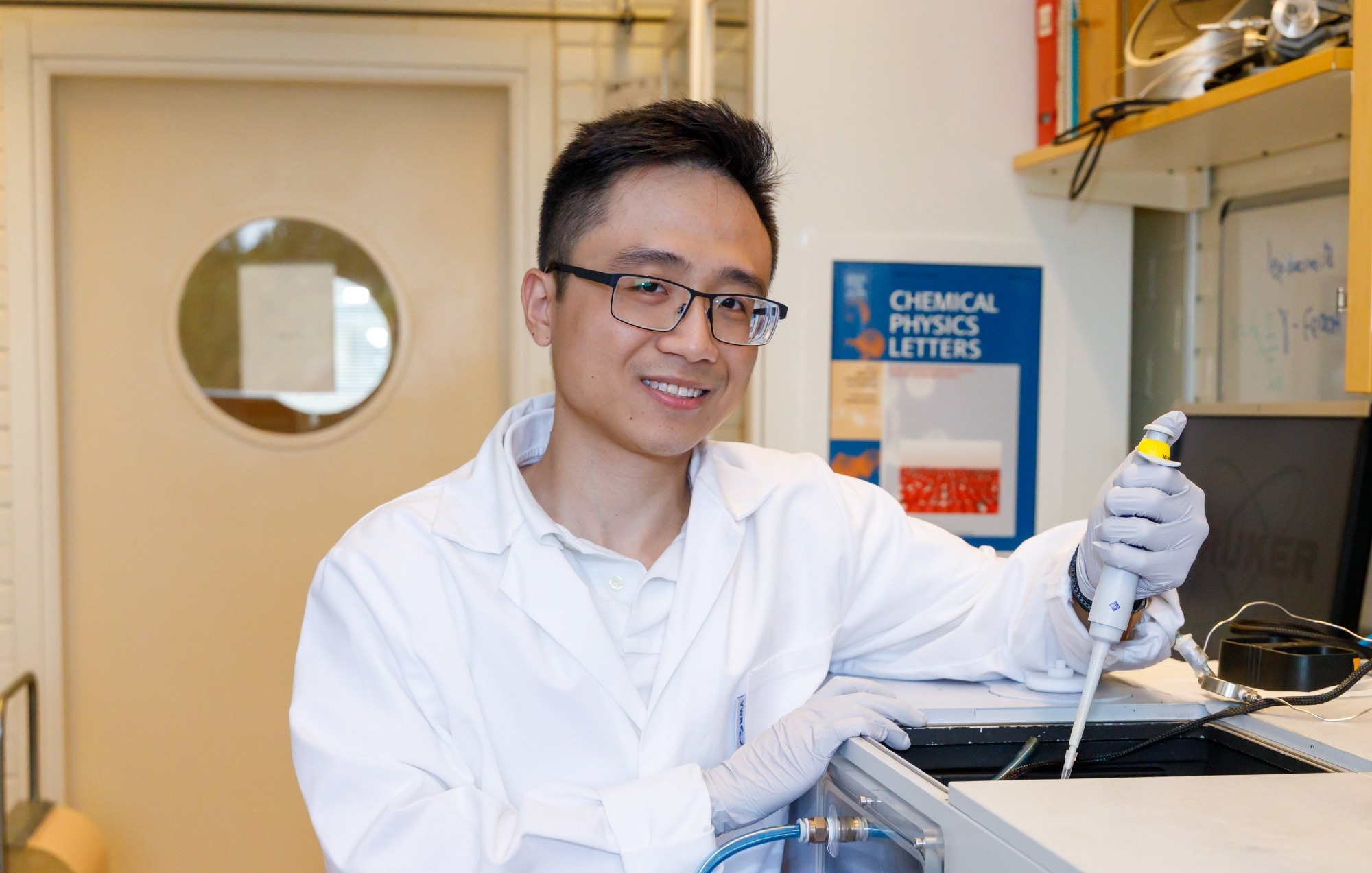Air moisture, upon contact with material surfaces, creates thin, imperceptible water films. These films play crucial roles in Earth's soils, the atmosphere, and emerging technologies. A thesis conducted at Umeå University sheds new light on how these subtle phenomena influence chemical reactions.

Tan Luong, doctoral student at the Department of Chemistry at Umeå University. Image Credit: Trung Nguyen
Water films are virtually ubiquitous on the surfaces of minerals exposed to air moisture, spanning from arid soils to atmospheric dust. The number of water layers that minerals can retain is directly regulated by atmospheric humidity.
Tan Luong's thesis reveals how water films of varying thicknesses affect two critical phenomena: the alteration of minerals and the decomposition of organic substances. These findings contribute to the development of fundamental science urgently needed to address some of humanity's most pressing challenges, including global warming and pollution control.
Grows in Multiple Dimensions
From primary minerals, new minerals can form as ions—charged atoms or molecules—dissolve into water films. These ions subsequently interact with environmental gases such as carbon dioxide and oxygen, leading to the growth of fresh minerals. These newly formed minerals can then influence the properties and functions of the original mineral.
Even extremely thin water films that partially cover mineral surfaces can support mineral growth, although this growth occurs in two dimensions, much like the lateral expansion of a single sheet of paper. In contrast, thicker water films with multiple layers stimulate three-dimensional growth, akin to stacking numerous sheets of paper into a book.
This knowledge is beneficial for fabricating materials in environments with controlled humidity. Size and shape of materials impact their functions in advanced technologies, including battery development and pollutant removal strategies.
Tan Luong, Umeå University
Eco-Friendly CO2-Capture
Many carbon dioxide (CO2) capture technologies face the challenge of high energy costs, which can ironically result in a carbon footprint. Therefore, an environmentally friendly solution that emulates natural CO2 capture processes, much like the way stalagmites in caves capture CO2, could potentially contribute to achieving a zero-emission goal.
In pursuit of this goal, Tan Luong investigated the capacity of magnesia (MgO), a fundamental component of specific mine wastes, with the potential to develop environmentally-friendly technologies to capture CO2.
However, he discovered that ultrathin magnesium carbonate coatings significantly impeded the capture reactions. Nonetheless, he identified a promising approach to overcome this obstacle through chemical reactions under conditions of extremely high humidity.
We've highlighted the potential of MgO for capturing CO2 under dynamic humidity conditions. However, to achieve eco-friendly and efficient capture, more work is needed to avoid the coatings that hinder the reactions.
We highlighted the potential of MgO for capturing CO2 under dynamic humidity conditions. Still, to achieve eco-friendly and efficient capturing, more work is needed to avoid the coatings that hinder the reactions.
Tan Luong, Umeå University
The Role of Oxygen
Tan Luong's research also unveiled the influence of oxygen and water films on the rate at which organic pollutants are transformed into benign substances, such as CO2 and water, using a method that converts light energy into chemical energy. These discoveries contribute to our foundational understanding, essential for advancements in technologies related to water and air purification.